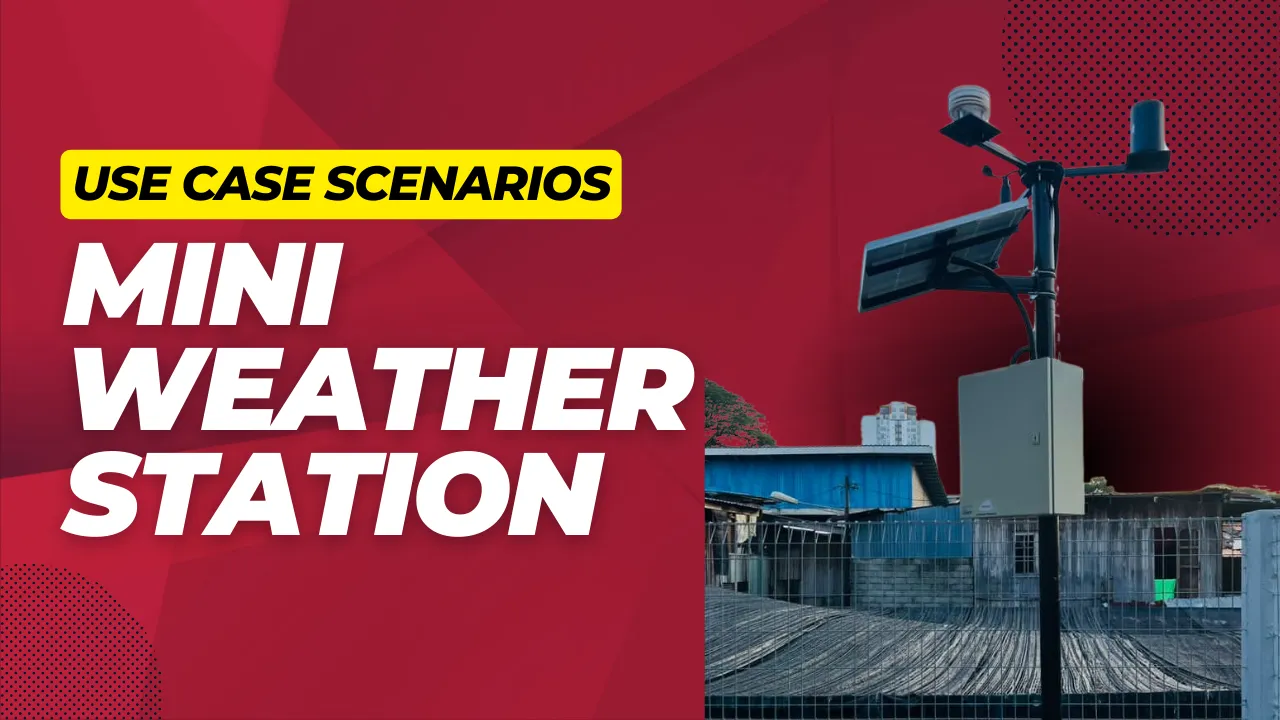One way or another, with accurate and localized weather information, value in all of it has never been more tangible, from agriculture, through environmental monitoring, to urban planning.
Lives are at stake.
While these systems function rather well for the purpose they serve, they are expensive, complex, and do not offer the granularity required to make site-specific and localized decisions.
That’s where the power of mini weather stations comes in — a solution that’s not only innovative but accessible and with the highest level of accuracy.
Why Precise, Local Weather Data Is Needed
You could think of it as planning an agricultural schedule without accurate rainfall predictions for your location down to the inch, or it’s like taking readings on urban air quality from a station miles off.
A shortage of localised weather data has the impact ranging from an inefficient use of resources to lesser productivity and to an additional environmental footprint.
Other than that, traditional weather stations are bulky, require substantial power, and added flexibility in deploying them effortlessly in different environments.
Increasing needs for accurate, real-time data on the environment
The rising impacts attributed to climate change elevate the importance, more than ever, of setting the bar high in environmental data production.
Demand is going through the roof — from farmers who need to know the precise time to plant or water, to city planners trying to mitigate urban heat islands.
This, obviously, delimits the existing system, pointing out to a critical necessity for a more flexible, accurate and cost-efficient solution.
Mini Weather Stations Driven by Solar Energy and 4G Connectivity
Enter the mini weather station: the compact and solar-powered IoT solution that redefines localized weather and environmental monitoring.
The sensors monitor the amount of rain, wind speed, atmospheric temperature, humidity, atmospheric pressure, and carbon dioxide, thus giving a complete environmental overview.
It is powered by solar energy, hence making the system to be up and be operational throughout, in the absence of other power sources.
Second, 4G cellular communicates real-time data with the IoT platform of Favoriot, hence, making collection and visualization of data easy.
Use Case Scenarios in Practice
1 — Precision Agriculture
An advanced knowledge of the environmental conditions provides information on the yield of the crops and helps in judicious decisions on how to manage resources.
The mini weather station is able to provide this real-time information on the data of rainfall, temperature, and humidity to the farmer, which informs judicious decisions on irrigation and planting.
This would not only optimize the use of water but also enhance the health of the crop and yield.
2 — Urban Environmental Monitoring
Microclimate differences and pollution are regularly evident in urban areas.
Mini weather stations are used by city managers and environmentalists to monitor levels of air quality and temperature and humidity conditions simultaneously in diverse segments of a city.
Such information is critical towards the formulation of methods of combating urban heat islands and air pollution that if successfully implemented, would further enhance urban livability.
3 — Disaster Preparedness and Response
Mini-weather stations would be of much use in disaster preparedness and response in areas affected by extreme weather events.
By way of illustration, monitoring the amount of rain and wind speed enables one to predict and reduce the impact of floods and hurricanes, hence further evacuations and resource allocation.
The Technology Edge
Really, what is intriguing about the mini weather station is its technological sophistication in the simplicity of use.
With solar power, it is deployable in remote areas without thinking of the battery life to recharge it.
It further ensures data is transmitted and received in real time, coverage and connectivity of 4G to the Favoriot platform, which collects the data and visualizes it, hence being accessible and actionable to the decision-makers.
The ability to use advanced sensors with connectivity options makes the mini weather station a robust tool for multiple applications.
Video — Mini Weather Station
https://cdn.embedly.com/widgets/media.html?src=https%3A%2F%2Fwww.youtube.com%2Fembed%2FCzp4ZiiC0kw%3Ffeature%3Doembed&display_name=YouTube&url=https%3A%2F%2Fwww.youtube.com%2Fwatch%3Fv%3DCzp4ZiiC0kw&image=https%3A%2F%2Fi.ytimg.com%2Fvi%2FCzp4ZiiC0kw%2Fhqdefault.jpg&key=a19fcc184b9711e1b4764040d3dc5c07&type=text%2Fhtml&schema=youtube
Conclusion
The mini weather station is an innovative environmental monitor and data collection move that delivers a versatile, efficient, and accurate solution to real-time data collection.
And the applications in everything from agriculture to urban planning and disaster management show how geography could revolutionize our dealings with the earth and its response.
Taking advantage of the power of these mini weather stations to improve decision-making, make greater use of resources, and enhance preparedness for environmental challenges.
The next wave of environmental monitoring is here, and it’s compact, it’s solar-powered, and it’s smarter than ever before.
Contact Favoriot to schedule an appointment or for further details.
This article, “Mini Weather Station — Use Case Scenarios,” was originally published on Medium.
